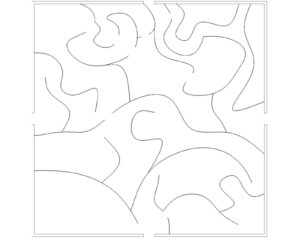The age of adolescence usually represents confusion, instability, mind block, the thought of failure, stress and miscue, where the person is not sure about the decision where he/she is usually shaken, and where the confusion begins.

So the room is designed in a way where the user feels the instability, confusion and all the adolescent characteristic feature.
So, for the study, The “Jewish Museum” in berlin is taken as a study for the adolescent concept room. The architectural masterpiece is designed by Architect Daniel Libeskind. The Jewish Museum is a museum built to represent the lives of the Jewish people who they had treated as slaves. The term slave is totally different from adolescent but the characteristic elements are the same.


So in the museum, the floor is designed in a jagged way so that the visitors feel the instability. The walls are disproportionately high compared to humans just to make the visitor feel inferior the wall has horizontal narrow windows depicting hope. The floor of the museum is also designed on different levels to represent there are no straight lines in life. Some walls are designed inclined to make the user feel insecure.


So, inspired by the Jewish museum, my room design is designed with the play for walls and floors.
The room is designed like a maze which represents choosing the way in life is crucial in the adolescent age. So first the walls are designed to create multiple different passages where the correct path leads us to the correct exit.



So thus with this inspiration, my room design is started. I started to create a plan for the room with the divisions. The first concept is to create a curvilinear wall which creates a more interesting pathway. The second conceptual idea is to create a perpendicular wall. This idea has many entrances and exits but the pathway was not quite interesting as the curve wall. But the complexity of the game is better in the perpendicular wall.





I’d be hesitant to say there is only one correct pathway as an adolescent – in fact, it would probably be more accurate to say there are many potential pathways, each leading to a future that could be as equally valid/rewarding as the others. But then again, you do need to simplify the reality a bit for a game design. Of your 3 concept maps, I think the 3rd gives a better balance of challenge for the player, with the variability in passage size and shape, versus simplicity in terms of creating the game space.